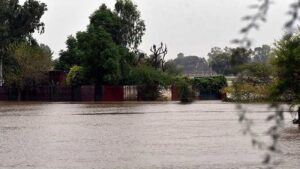Floods and landslides in Pakistan due to heavy rains, 35 killed
Heavy rains have caused flash floods in the northern parts of Pakistan, in addition to inundation and landslides in many surrounding areas. At least 35 people were killed in two days.
Many more people have suffered. Anadolu news agency reported this information in a report on Thursday (August 1) citing officials and locals.
The news agency reported that torrential rains wreaked havoc in various parts of the picturesque Chitral district of northwestern Khyber Pakhtunkhwa province. Heavy rains and flash floods there swept away houses, bridges and livestock last Wednesday and cut off many suburbs and villages from the city.
Heavy rains have also caused landslides and mudslides. Due to this, the road was blocked at various points.
Local Israr Ahmed told news agency Anadolu on the phone that the situation is very serious. By the grace of Allah, the human losses are not so great compared to the devastation caused by the rains and flash floods. However, there was a lot of infrastructural damage.
According to the Khyber Pakhtunkhwa Provincial Disaster Management Authority, 19 people lost their lives and 15 others were injured in rain-related accidents in different parts of the province in the last 48 hours.
Around 11 members of the same family died when the basement of a house flooded in Kohat district on Tuesday. Eight more people were killed by lightning in the southern Thar desert on Tuesday.
Besides, hundreds of tourists have been stuck there for two days as a main bridge connecting the famous tourist destinations of Kagan and Naran was cut off from the rest of the country due to flash floods.
The Pakistan Meteorological Department has forecast scattered rains and floods across the country from August 2 to 6 in major cities like Karachi, Lahore and Islamabad.
The National Disaster Management Authority has asked everyone to be alert and take necessary measures to avoid human and infrastructural losses due to possible rains. The country’s state-run organization coordinates various relief and rescue agencies.
The monsoon season from July to August has long wreaked havoc in South Asian countries. However, its intensity has increased in recent years. And that is mainly due to climate change.





